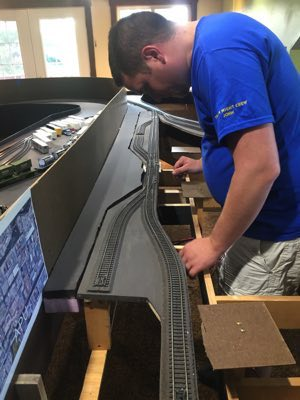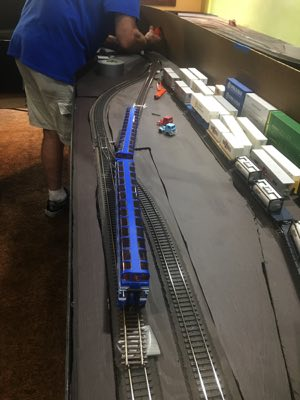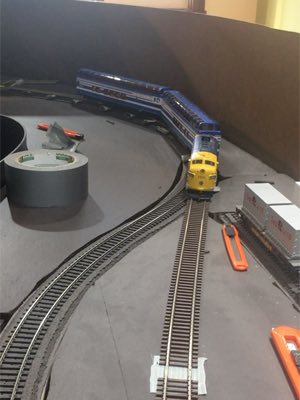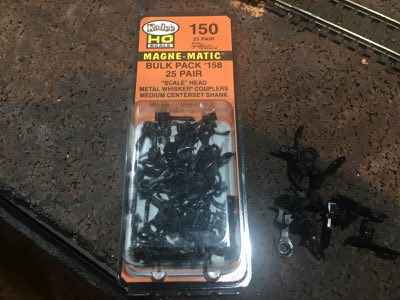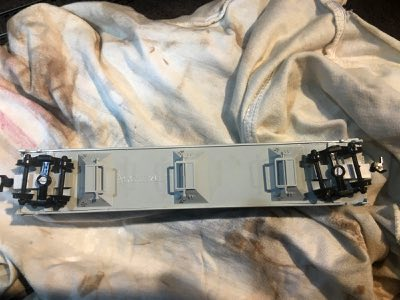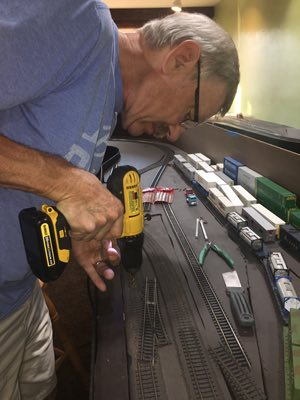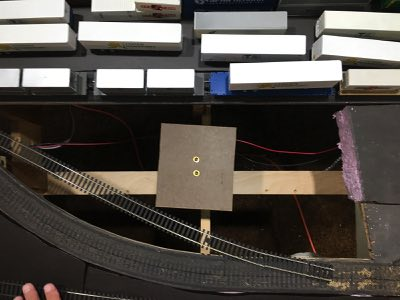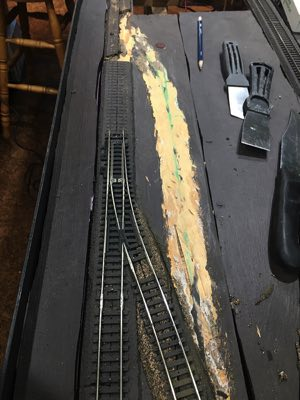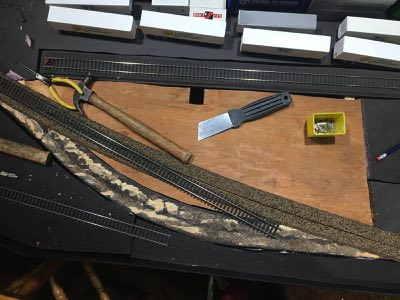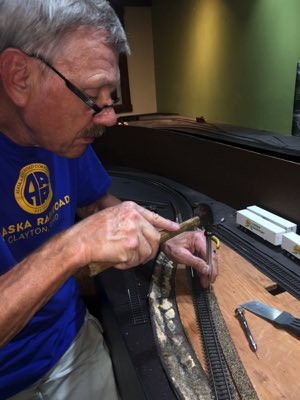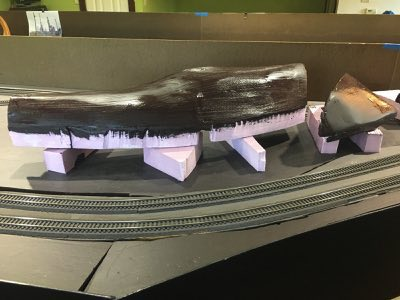 |
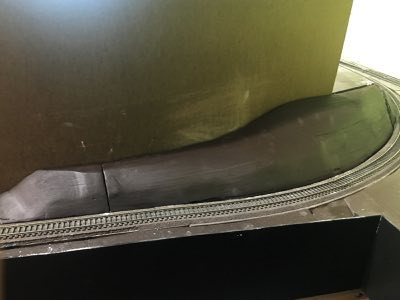 |
 |
| During the week I crafted a land form that transitions from TwentyMile to Flint Hills Refinery. This required a combination of foam board, expanding foam and spackle. After lots of sanding and a coat of paint the three pieces were ready to put into place. | The transition increases four inches in elevation. Currently it looks kind of hinky, but once covered with trees, rocks and grasses it should look pretty good. In the meantime it will prevent trains from falling to the floor in the event of a derailment. | As mentioned last week 10 of the 41 switches aren't functioning properly. Tonight Rick and LJ do some tweaking so they all function smooth as glass. One particularly pesky switch requires lots of modification in addition to replacement of a piece of adjacent track. |
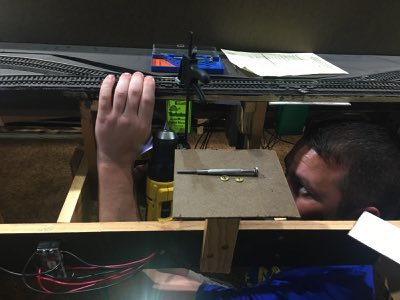 |
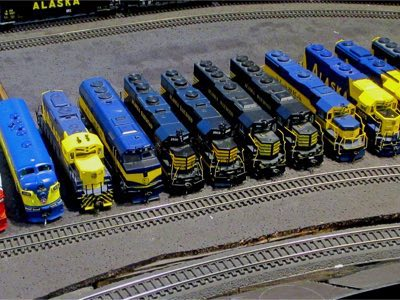 |
|
| One of the switches in the APU is refusing to work. LJ pops out the large adjacent foam board, crawls under the bench work and slithers up between the joists. No minor adjustments will fix this malfunction. LJ asks Max for some assistance, but he is too busy dreaming up solutions to the world's current problems. | LJ repositions the Tortoise switch machine and the switch now operates properly. Tonight will be LJ's last night with the crew as he's accepted a lucrative job offer in northern Kentucky. As the longest serving member of the construction team his presence will be sorely missed, but his talents are very much appreciated. | Rick's marvelous efforts are shown here as 24 locomotives were successfully converted to RailPro. I am so thrilled! Many thanks to John Gray for analyzing my passenger car derailment problems and proposing some great solutions! Stay tuned..... |
 |
 |
 |
| During the week I crafted a land form that transitions from TwentyMile to Flint Hills Refinery. This required a combination of foam board, expanding foam and spackle. After lots of sanding and a coat of paint the three pieces were ready to put into place. | The transition increases four inches in elevation. Currently it looks kind of hinky, but once covered with trees, rocks and grasses it should look pretty good. In the meantime it will prevent trains from falling to the floor in the event of a derailment. | As mentioned last week 10 of the 41 switches aren't functioning properly. Tonight Rick and LJ do some tweaking so they all function smooth as glass. One particularly pesky switch requires lots of modification in addition to replacement of a piece of adjacent track. |
 |
 |
|
| One of the switches in the APU is refusing to work. LJ pops out the large adjacent foam board, crawls under the bench work and slithers up between the joists. No minor adjustments will fix this malfunction. LJ asks Max for some assistance, but he is too busy dreaming up solutions to the world's current problems. | LJ repositions the Tortoise switch machine and the switch now operates properly. Tonight will be LJ's last night with the crew as he's accepted a lucrative job offer in northern Kentucky. As the longest serving member of the construction team his presence will be sorely missed, but his talents are very much appreciated. | Rick's marvelous efforts are shown here as 24 locomotives were successfully converted to RailPro. I am so thrilled! Many thanks to John Gray for analyzing my passenger car derailment problems and proposing some great solutions! Stay tuned..... |
